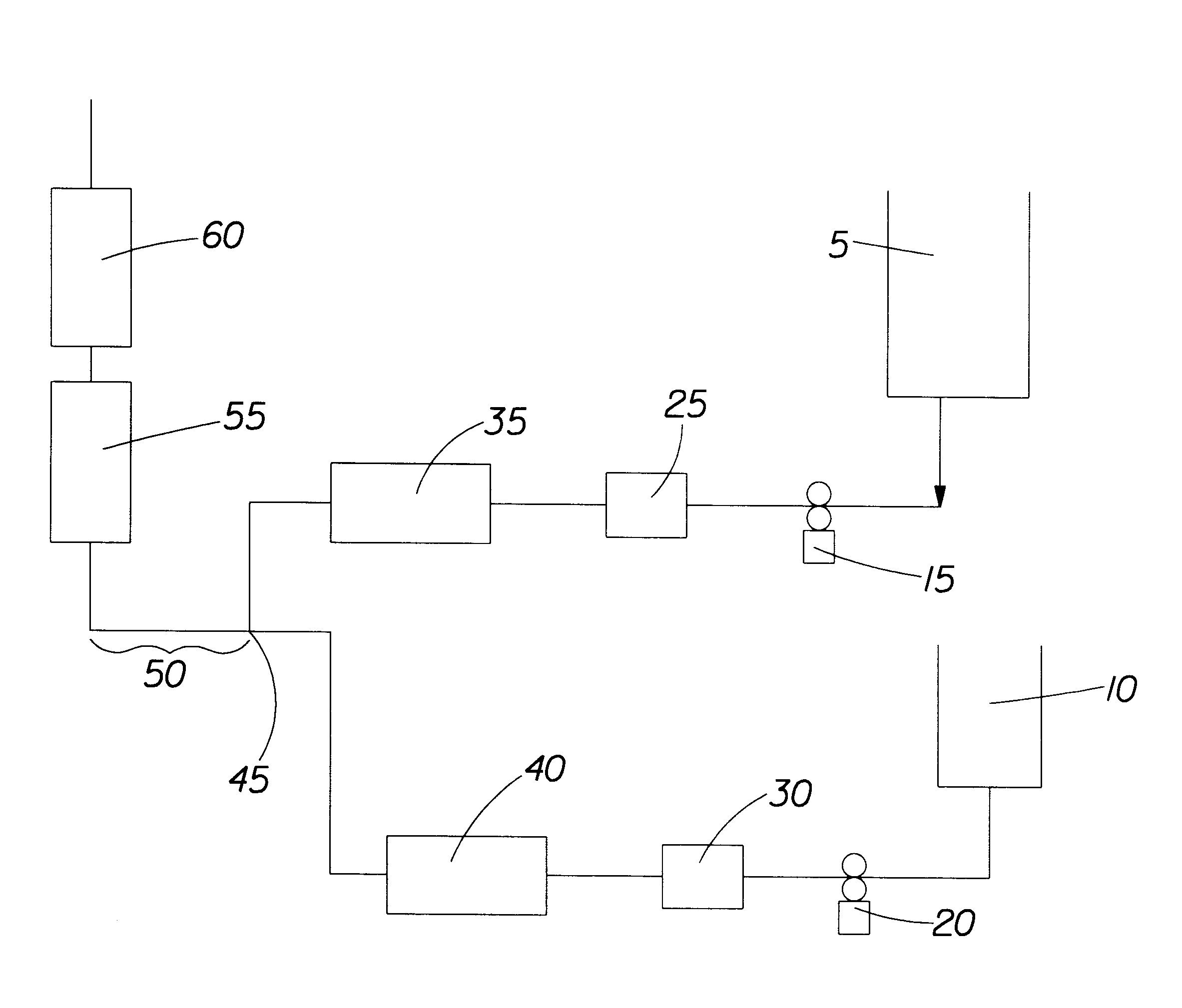Apparatus and process for in-line preparation of HIPEs
a technology of in-line preparation and apparatus, which is applied in the direction of transportation and packaging, fuels, mixing, etc., can solve the problems of system expected to produce hipes with an undesirably wide internal phase size distribution, and the added process complexity is obvious
- Summary
- Abstract
- Description
- Claims
- Application Information
AI Technical Summary
Problems solved by technology
Method used
Image
Examples
example 1
Pre-made water (heated up) and oil (room temperature) phases are pumped separately under pressure to a static mixer injection point. The injector is configured with the oil injected at the center of the pipe (water flowing annularly therearound) through an orifice (restricted open section), of a diameter equal to 1 / 10 of the static mixer diameter and away from the first static mixing element not more than approximately 1 mixer diameter length. The injected liquids are passed through (1 or more) static mixer segments in a series. The mixer axis is vertically oriented with the flow being upward.
Increased water to oil ratios, and increased flow rates resulted in the pressure drops and cell size as shown in Table 2:
Different cells size accomplished with varying total flow rate and mixer configurations (described as number of segments, diameter, and elements within each segment) at a constant oil phase to water phase ratio produced cell sizes after polymerization as shown in Table 3.
Tabl...
PUM
| Property | Measurement | Unit |
|---|---|---|
| Fraction | aaaaa | aaaaa |
| Fraction | aaaaa | aaaaa |
| Fraction | aaaaa | aaaaa |
Abstract
Description
Claims
Application Information
 Login to View More
Login to View More - R&D
- Intellectual Property
- Life Sciences
- Materials
- Tech Scout
- Unparalleled Data Quality
- Higher Quality Content
- 60% Fewer Hallucinations
Browse by: Latest US Patents, China's latest patents, Technical Efficacy Thesaurus, Application Domain, Technology Topic, Popular Technical Reports.
© 2025 PatSnap. All rights reserved.Legal|Privacy policy|Modern Slavery Act Transparency Statement|Sitemap|About US| Contact US: help@patsnap.com

